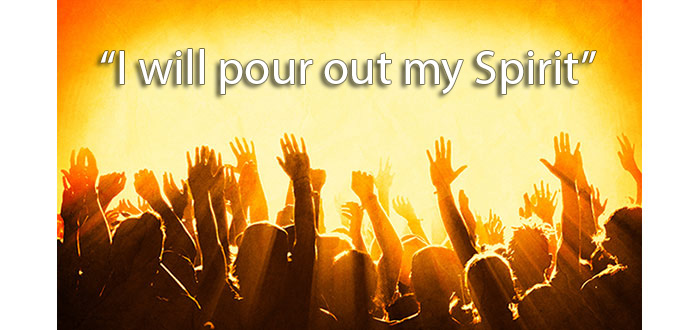Covenant Communities: A Sign of the Times
The Sword of the Spirit is part of a larger movement of Christian covenant communities throughout the world, some of them joined together in networks, some standing on their own.
This movement of communities is a sign of the times, when Christians long divided from one another are coming together to seek unity and to stand together for the Gospel. In the face of a world grown more and more hostile to Christianity, the support of brothers and sisters in Christ is very welcome and urgently needed.
A vision for Christian personal relationships in Christ-centered communities
Steve Clark, a key founder of the covenant community movement, began to develop a vision for building Christian communities in the 1960s. While pursuing graduate work in Germany in 1963 he wrote:
Christ wants the man [the human person], and he wants the man in a personal relationship – love. That is why the center of any Christian endeavour must be the community of people who are united to Christ and each other. They have a common vision, and they have a common spirit because the gift of Christ is the Holy Spirit who moves them to activity.
The church is a community that works together, not simply a service station where individuals and families come together periodically to be fuelled up with grace so they can go out and do their jobs. It is a personal relationship between Christ and his people, not an organizational structure.
Steve Clark’s 1972 book Building Christian Communities: Strategy for Renewing the Church was the first systematic exposition of the principles behind the vision that covenant communities came to embody. In it, he describes the importance of environment for forming individuals and argues that since the larger modern social environment is not conducive to Christian living, environments must be constructed to counteract its influence. What the Church needs, he argues, is “basic Christian community.” He defines it as follows:
A basic Christian community is an environment of Christians which can provide for the basic needs of members to live the Christian life. As such it is the smallest self-sustaining unit of Christian living. In it, its members can find on a regular basis all they need for living the Christian life.
A Christian community, he says, is a special kind of environment. First, it must consist of people who have a personal commitment to Christ. As an environment, it must be “relationship-oriented and not just task-oriented.” It must also be a large enough group to provide what is needed by its members, and in a small enough geographical area that relationships can be maintained. In addition to these characteristics, it must have organization and unity, and be concerned with “all that is involved in being a Christian.”
[Source: Building Christian Communities of Faith and Vitality, Living Bulwark, November 2020]
Our Beginnings in Covenant Community, by Bruce Yocum
In 1969, when I was at university in Ann Arbor, Michigan, USA about 30 of us prayed regularly together. We had not become a community at that point, just a loosely-knit group of Christians, mostly university students, who had been baptised in the Holy Spirit and were trying to take our faith seriously. We would meet each Monday evening in the large living room of a rented house to pray and seek the Lord.
“I want to make a covenant with you… but you must first smash your idols…”
During a meeting early in the summer of 1969, the Lord began to speak to us about repentance, about clearing away the obstacles to God’s work, obstacles which we had created through our unacknowledged and unrepented sin. In prophecy after prophecy during that meeting, we heard of the areas that needed to change, and the Holy Spirit opened the eyes of many of us to see what he was seeing. Mostly the sins were not big, but things that occupied a place in our life that God wanted for himself – our career plans, our cherished possessions, our immoderate interest in food, and so forth. This “prophetic examination of conscience” lasted several weeks and created in many of us a sense of anticipation: what was God preparing us for? He seemed to be addressing us as a group even as he was addressing us as individuals. He seemed to be “doing something with us.”
Midway through that summer we found our attention drawn to many passages in Scripture about covenant. That was the beginning of a year of discovery, as we learned about the covenant love and faithfulness between God and his people and between brothers and sisters who are part of the same people. So the Lord’s call to covenant community had begun – with a corporate call to repentance.
God’s Way of Living
One of the most striking things about being part of the community in the early days in Ann Arbor was the strong conviction that we had been caught up in a great action of God. We saw the evidence everywhere we looked: men and women were hearing God’s word and were being changed by it. God speaking and was bringing about what he had spoken. And before our very eyes this work of God grew with astounding speed.
A Worldwide Work of God
Those who had attended a tiny prayer meeting in Ann Arbor in December 1967 (there were perhaps 15 people present) heard a remarkable prophecy.
You will reap a harvest you did not sow. You will sow, and in years to come will see the harvest. The work you have seen begun here will spread…. I will bring many to you…and I will baptize them in my Holy Spirit. I will raise up spiritual sons and daughters for my work. A shining cross of my body will be raised up among you…I will send people to you from all across the nation to receive a message they will take back [with them]….
Within a few short years this prophecy was fulfilled, as hundreds of people came every year to visit the community, not only from across the nation, but from around the world. Less than eight years after that prophecy was given, the community had to maintain guesthouses to care for the 1500 people who were coming each year to visit the community and see what God was doing there.
Just as had been prophesied, many came to Ann Arbor and caught a vision for Christian community lived in the power of the Holy Spirit, returned to their homes to pursue that vision themselves. In those very early years, the seeds were being planted which later produced a harvest of Christian community life around the world.
[Source: Our Beginnings in Covenant Community – A Worldwide Work of God, Living Bulwark, May/June 2010.]
What did “covenant” mean in the context of Christian community?
When the Ann Arbor community began receiving prophetic words during 1970 speaking of a covenant, theywere puzzled. Many of the leaders were trained in theology and Scripture and were familiar with the word “covenant.” God had made a covenant with Israel and Christ was the high priest of the New Covenant. But what did it mean to say that God wanted to make a covenant with them as a people?
As they studied the scriptural references, a new dimension of their call to community emerged.
This perspective was crucial to their identity, not merely as a community, but as a covenant community.
The call to covenant is at God’s initiative.
The whole idea of “covenant” came prophetically from God – it was his initiative. Community was already forming, but “covenant” added something crucial to the kind of community the Lord was calling them to become.
This call is also a call to mission.
The covenant was a call to members to dedicate themselves to the service of God, not merely as individuals, but as members of a body, taking their places within the whole Christian people.
The nature of this mission involved calling men and women to Christ and sharing with them the life in the Holy Spirit.
The covenant with God also involves a covenant relationship among the members.
They were to love one another with a love founded in a common calling.
They were brothers and sisters in Christ, a relationship they shared with all other Christians, but by entering into the community covenant they were brothers and sisters bound to one another in a special way, in a bond created by God at his own initiative.
The mutual commitment that was the heart of our covenant together came before the details of a way of life or a specific mission.
[Source: I Will Pour Out My Spirit: 50 Years of God’s Faithfulness, © 2021 The Sword of the Spirit.]
Epilogue: The prophetic call to the Sword of the Spirit
In spite of all the challenges, the Lord’s bounty will not fail. As covenant communities grow throughout the world, we hear continually the prophetic word that God has greater things in store.
One of the most encouraging signs is that we are not alone. As the Lord has spoken to us, the Sword of the Spirit is a part, not the whole, of God’s work in the world today.
This has been the clear word to the community throughout its life and now has become more apparent than ever.
In 2017, at the celebrations of the fiftieth anniversary of the Catholic Charismatic Renewal in Rome, Bruce Yocum, a longtime leader in the Sword of the Spirit, was invited to address a meeting of people from covenant communities – from Sword of the Spirit, the Catholic Fraternity of Covenant Communities, and the European Network of Communities. Bruce reminded us of the great work of God all around us.
“When a mountain river gets a good way down the mountain it becomes deeper, broader, even more powerful but less violent. You can get your head up and look around. After the charismatic renewal had become an accepted and ubiquitous aspect of the life of the church I began to notice that it was not the only river on the mountain!
There were in fact, and literally (not an exaggeration) hundreds of these powerful currents: Neocatechumenate, the Focolare, the St. Egidio movement, Communion and Liberation, Cursillo, and many, many more. They are all new, all products of the work of the Holy Spirit in the church in the twentieth century.
We rightly appreciate the great work of God that is the charismatic renewal, and for us in particular charismatic community. But when we lift up our heads out of the roaring, rushing waters of the action of God that has formed us and carried us, we see that we are one of many powerful currents rushing along, many other new forms of life in the church which began contemporaneously with us and are both like us and quite different from us.”
The Sword of the Spirit is only a part of the greater movement of charismatic covenant community, which in turn is only one of the movements that God has raised up around the turn of the new millennium. Since the beginning of the Renewal, the prophetic vision of the Sword of the Spirit has been the same: as the world becomes more challenging for Christians, more de-Christianized, God will raise up communities to proclaim Christ to the world and to live Christ’s way of life in the world.
The prophetic call to the Sword of the Spirit is still what it has been for the last fifty years: to stand firm as a light in the darkness that surrounds us and to trust in the Lord. Never more so than today is the “art of community” necessary. As the culture around us becomes more hostile to Christianity, and as institutions around us essential to human flourishing crumble, the witness of people alive with the Gospel and committed to one another will be sought after more and more. It is for such a time as this that the Lord has called the Sword of the Spirit into being, and he has promised that he will provide us with his grace, his mercy, and his power.
[Source: I Will Pour Out My Spirit: 50 Years of God’s Faithfulness, © 2021 The Sword of the Spirit.]
Image credit: Illustration of hands raised in praise and worship, with Scripture quote, composite by Living Bulwark graphic designer, artist unknown.
The Sword of the Spirit is a network of charismatic and ecumenical covenant communities and movements around the World.



